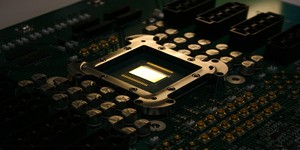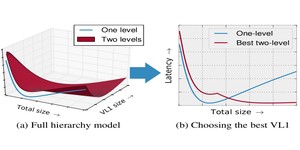Researchers make magnetic graphene
January 29, 2015 | 12:42
Companies: #research #researchers #university-of-california-at-riverside

Researchers at the University of California at Riverside claim to have overcome a hurdle to using wonder-material graphene for future computer storage: its inability to handle magnetism without doping.
First described by Hans-Peter Boehm in 1962 and responsible for winning the University of Manchester's Andre Geim and Konstantin Novoselov the 2010 Nobel Prize for Physics, graphene is deceptively simple. It's little more than an allotrope of carbon in a sheet one molecule thick, and can be created as easily as putting sticky-tape on a carbon sheet and peeling it off. Researchers at the University of California at Los Angeles revealed a graphene-based 300GHz transistor back in 2010, but not everyone is a fan. IBM claimed in 2011 that graphene would not replace silicon for semiconductors as it is, while last year researchers warned of possible environmental concerns from its use.
While the environmental concerns aren't going away any time soon, researchers at UCR have published the results of a study that suggest graphene storage chips may be closer than IBM feared. While graphene has many great properties, magnetism isn't one of them. To hold a magnetic charge, it must be doped with a magnetic material - something that disrupts graphene's other desirable properties. Now, a team led by Jin Shi claims to have a solution: bringing the graphene sheet into close contact with a magnetic insulator.
'The magnetic graphene acquires new electronic properties so that new quantum phenomena can arise,' claimed Shi in a press release regarding his team's findings. 'These properties can lead to new electronic devices that are more robust and multi-functional.'
The graphene in the experiment was unchanged, the team claims. By placing it on a sheet of yttrium iron garnet, grown by laser molecule beam in true mad-scientist fashion, the graphene was found to 'borrow' the magnetism without disrupting its electrical properties. The result, the team claims, is the potential for graphene to be used in future high-capacity magnetic storage devices - although the path from the lab to shop shelves will, as always, be a long one.
The team's findings can be found in the journal Physical Review Letters, titled Proximity-Induced Ferromagnetism in Graphene Revealed by the Anomalous Hall Effect.
First described by Hans-Peter Boehm in 1962 and responsible for winning the University of Manchester's Andre Geim and Konstantin Novoselov the 2010 Nobel Prize for Physics, graphene is deceptively simple. It's little more than an allotrope of carbon in a sheet one molecule thick, and can be created as easily as putting sticky-tape on a carbon sheet and peeling it off. Researchers at the University of California at Los Angeles revealed a graphene-based 300GHz transistor back in 2010, but not everyone is a fan. IBM claimed in 2011 that graphene would not replace silicon for semiconductors as it is, while last year researchers warned of possible environmental concerns from its use.
While the environmental concerns aren't going away any time soon, researchers at UCR have published the results of a study that suggest graphene storage chips may be closer than IBM feared. While graphene has many great properties, magnetism isn't one of them. To hold a magnetic charge, it must be doped with a magnetic material - something that disrupts graphene's other desirable properties. Now, a team led by Jin Shi claims to have a solution: bringing the graphene sheet into close contact with a magnetic insulator.
'The magnetic graphene acquires new electronic properties so that new quantum phenomena can arise,' claimed Shi in a press release regarding his team's findings. 'These properties can lead to new electronic devices that are more robust and multi-functional.'
The graphene in the experiment was unchanged, the team claims. By placing it on a sheet of yttrium iron garnet, grown by laser molecule beam in true mad-scientist fashion, the graphene was found to 'borrow' the magnetism without disrupting its electrical properties. The result, the team claims, is the potential for graphene to be used in future high-capacity magnetic storage devices - although the path from the lab to shop shelves will, as always, be a long one.
The team's findings can be found in the journal Physical Review Letters, titled Proximity-Induced Ferromagnetism in Graphene Revealed by the Anomalous Hall Effect.

MSI MPG Velox 100R Chassis Review
October 14 2021 | 15:04








Want to comment? Please log in.